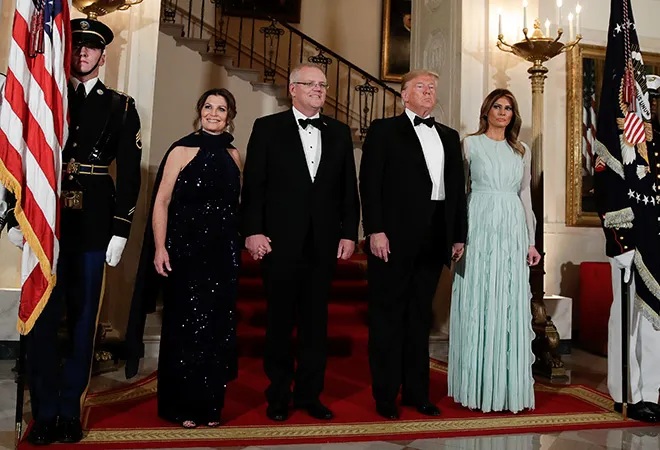
How Donald Trump has changed the world series>
The Trump administration’s domestic and foreign policies have created an impact on the US’ relations with most countries across the globe, including in Oceania. According to a poll conducted by the Lowy Institute in March 2020, just 30 percent of Australians had “some” or “a lot of confidence” in Trump’s foreign policy. Moreover, Australians are widely rejecting Trump’s “America first” policies, which include the imposition of tariffs on imports or US withdrawal from international agreements such as the Trans-Pacific Partnership (TPP) trade deal. The withdrawal from the TPP, which was strongly supported by the Australian government, has raised doubts amongst policymakers, strategists, and analysts in Australia about Washington’s commitment to maintain a viable strategic and economic presence in Asia. The ongoing US-China tensions—including those related to trade, disputes in the South China Sea, and the origins of the novel coronavirus— have put middle-power countries like Australia in a tough spot. The challenge facing Australia’s policymakers is being “compelled” to choose sides between its largest trading partner, China, and its long-term security ally, the US. Australian analysts also hold the view that the ongoing US-China trade war will have a detrimental effect on Australia.
To be sure, President Trump’s economic policies have created rifts in US-Australia bilateral ties. According to a report by the Financial Review, “the attacks on the World Trade Organisation, the indiscriminate use of tariffs - sometimes for non-trade-related issues - a growing reliance on agricultural subsidies” are issues of major difference between the two. Further, President Trump’s open declaration to “economically punish countries he feels are ripping off the American worker” does not bode well for US relations in the region. President Trump’s position on climate change does not help, either. With statements such as, for instance—“The concept of global warming was created by and for the Chinese in order to make US manufacturing non-competitive”—Trump will cause a strain in ties with countries in the Oceania region, for whom the threat of global warming is only too real.
The silver lining in US-Australia relations might be found in the area of security. The US has a satellite surveillance base at Pine Gap in Central Australia, and regularly deploys Marines to Darwin. In April 2020, an Australian frigate joined three US warships in the contested South China Sea for a joint exercise. These show Australia’s importance in the US’ Free and Open Indo-Pacific strategy. Indeed, the US and Australia are part of the Quadrilateral alliance (or the Quad) which has been elevated to the Ministerial level with two meetings held, the most recent one being in Tokyo. The Quad has begun engaging militarily, with the next round of the Malabar naval exercises involving the four countries being planned for November 2020.
In the US’ Indo-Pacific strategy, northern Pacific states (under the Compact of Free Association) is expected to receive more attention from the US government and Washington will continue to rely more on Australia and New Zealand to provide aid to South Pacific states. To compete with China’s fast-growing loan schemes, Washington is pledging more support for infrastructure development in the Indo-Pacific region through the BUILD Act passed in June 2018. Given the growing Chinese investment in the South Pacific since 2006, these island nations are also put in a difficult spot where they need to make a choice between US and Chinese investments.
The US, Australia and Japan are looking to finance the connection of a submarine internet cable to the Pacific island nation of Palau, in a project meant to counterweight the rising Chinese economic influence in the region. Australia recognises China’s growing threat to the maintenance of a rules-based order in the Indo-Pacific, and it is making efforts to push back: it has taken a tough stance against China’s Huawei, and is calling for an independent investigation into the origins of the novel coronavirus. Even as the US and Australia, however, do share common strategic objectives in the region, their interests and threat perceptions in relation to China are far from being symmetrical.
The views expressed above belong to the author(s). ORF research and analyses now available on Telegram! Click here to access our curated content — blogs, longforms and interviews.




 PREV
PREV


